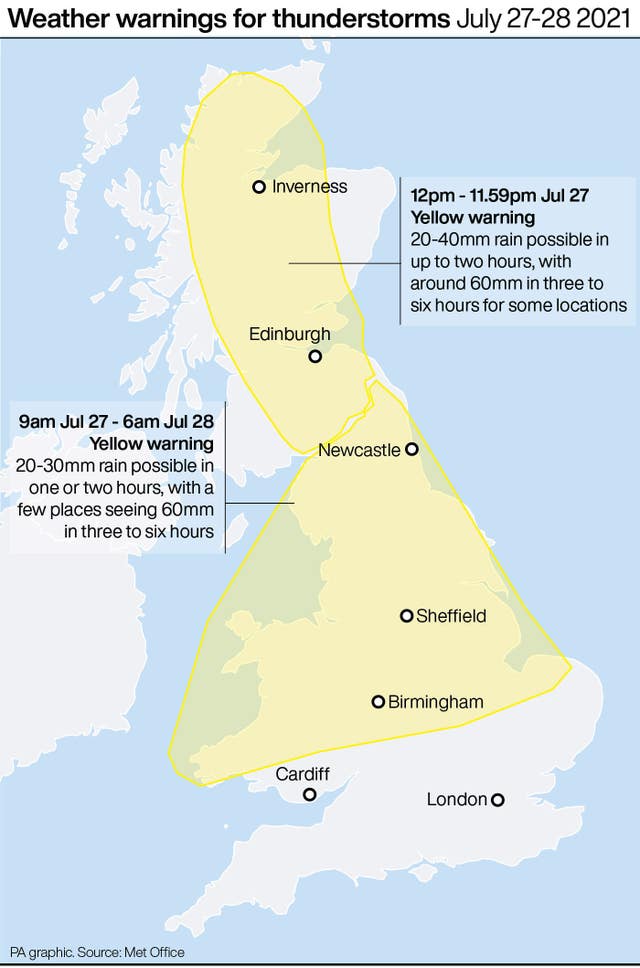London mayor Sadiq Khan said recent flooding in the capital shows “the dangers of climate change are now moving closer to home”.
London’s flooding
The capital saw nearly a month’s worth of rainfall on 25 July with homes, roads, and Tube stations flooded, while a flooded hospital cancelled all surgery and outpatient appointments on 26 July due to the heavy rain. Khan is holding a meeting with councils, Transport for London, the London Fire Brigade, and the Environment Agency on 27 July to see how flooding can be prevented and its impact reduced.
Heavy #showers will continue to grow in numbers through Tuesday morning, especially across central, southern and western parts of the UK 🌦️ pic.twitter.com/iZsGF8mdga
— Met Office (@metoffice) July 26, 2021
It comes as the Met Office has a yellow weather warning for thunderstorms covering vast swathes of the UK as forecasters expect more heavy rain and potential disruption. It said up to 60mm of rain could fall inside three hours in some places as showers and thunderstorms develop into Wales and northern and central England.
The thunderstorm warning runs until 6am on 28 July, while a separate warning for rain in Scotland is in place from 28 July until 6am on 29 July, forecasters saying “heavy and persistent periods of rain (will lead) to accumulations of 100-120mm in some locations”.

Alerts
Ten flood alerts are still in place in England, six of them inside the M25. Khan said the emergency services and local councils had hundreds of calls regarding the weather on 25 July.
He added:
The serious flash flooding in London over the last two weekends will have caused major concern and anxiety for many Londoners and it shows that the dangers of climate change are now moving closer to home.
Despite having limited powers in the area, it remains a key priority for myself and London’s council leaders that more is done to urgently tackle flooding and the other impacts of climate change.
This is why I have brought together all of the key partners to see what more can be done, including the water companies who have to address the localised issues with infrastructure that may exacerbate the impact of flooding.
The wettest part of the country on 25 July was St James’s Park in London, where 41.8mm of rain fell. The average rainfall for July in London is 45mm, meaning nearly a month’s worth of rain fell in one 24-hour period.
The daily rainfall value of 41.8mm recorded at St James’s Park is that weather station’s second-wettest July day on record.
Khan added:
I continue to lobby the Government to devolve more funding and powers to local leaders to enable us to deal with both flooding and the wider impacts of climate change.
COP26 this year provides an opportunity for the Government to show global leadership and give us the powers and resources we need to take even bolder action on climate change.
















